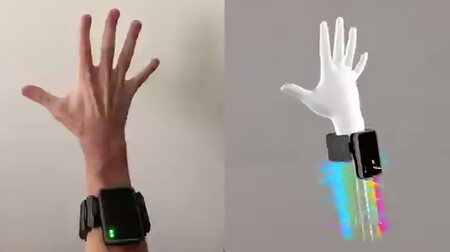This bracelet works by using electromyography to interpret the nerve signal that reaches the hand.
The Facebook bracelet is based on electromyography (EMG), a technique included in the field of neuroscience that has already been tested in the past by MIT researchers and that large technology companies such as Microsoft have had as part of their plans for a decade. to address the issue of no-touch control.
Electromyography (EMG) and nerve conduction studies are tests that measure the electrical activity of muscles and nerves. Nerves send electrical signals to make muscles react in certain ways. When they react, they emit signals that can be measured.
EMG examines the electrical signals from muscles when they are at rest and when they are working. It also lets you know if your muscles are responding correctly to nerve signals.
The bracelet Rather clunky in appearance and somewhat larger than a smartwatch, according to Facebook, the device is capable of interpreting the electrical activity of the nerves as the brain sends information to the hand. Equivalent to when the hand receives the nerve signal to move, the bracelet could translate this signal to digitally apply the command from the brain.
Just thinking about moving your finger, the Facebook device would allow you to move through augmented reality interfaces, as described by Facebook.
With “mental clicking,” Facebook believes it will be able to convince new users of the benefits of augmented reality.
It is under development internally. No announced forecast of when we might know more information.
Thomas Reardon, founder of CTRL-Labs and renowned neuroscientist with experience at Microsoft, currently leads the Reality Labs Facebook group and explains that it is not a “mind reading” bracelet, as this “comes from the part of the brain that controls motor information, not thought.
It works like this: You take a lot of photos and choose to share only a few of them. Similarly, you have many thoughts and choose to act on only some of them. When that happens, the brain sends signals to the hands and fingers telling them to move in specific ways to perform actions like typing and swiping. It’s all about decoding those signals on your wrist, the actions you’ve already decided to take, and translating them into digital commands for your device.








